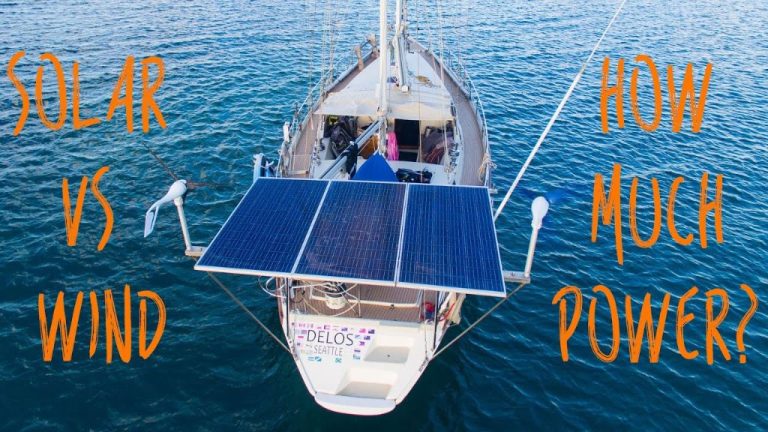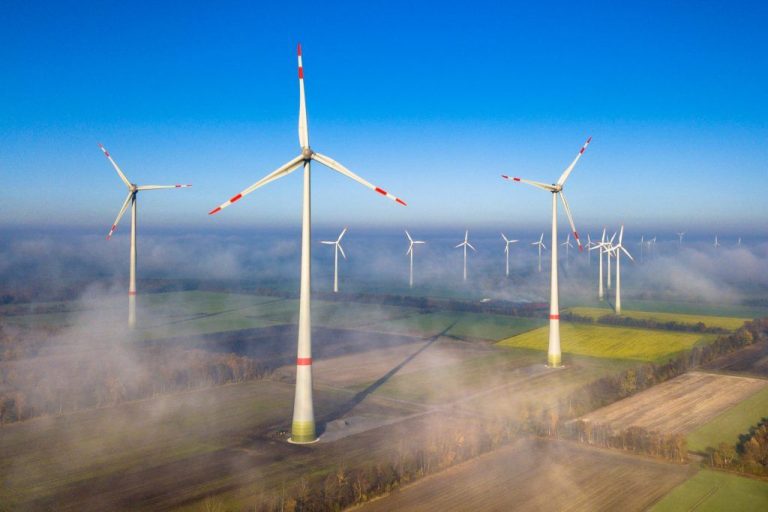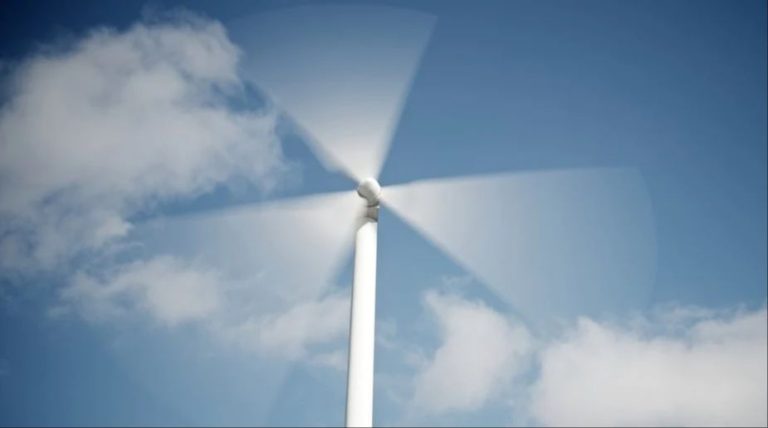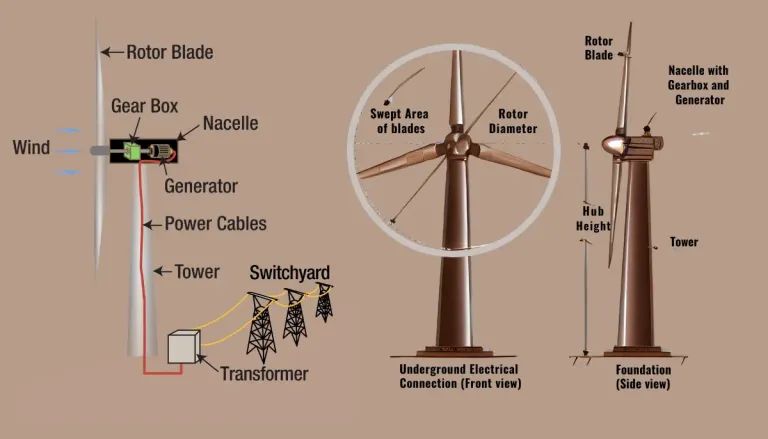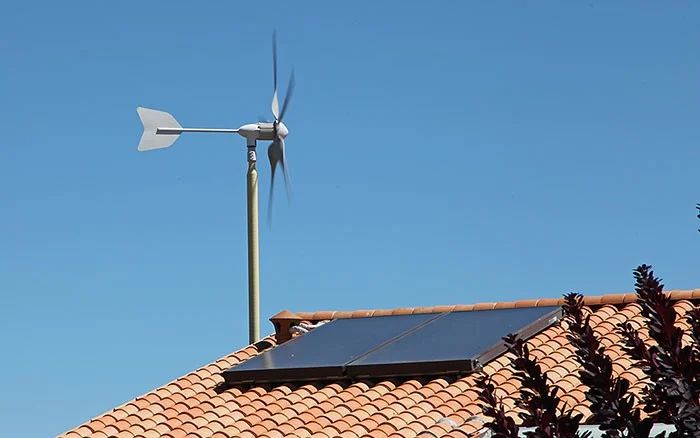How Is Wind Energy Produced In Simple Words?
Wind energy refers to the process of harnessing the natural power of the wind and converting its kinetic energy into electricity. As nations around the world seek to reduce dependence on fossil fuels and transition to cleaner forms of energy, wind power has emerged as one of the most promising and rapidly growing renewable energy sources.
Unlike finite resources like coal, oil, and natural gas, the wind offers a renewable and sustainable energy source that will never run out. Wind energy is also affordable, cost-competitive with conventional power plants, and capable of contributing significantly to the world’s electricity needs. With modern wind turbines able to convert the kinetic energy of the wind into electricity with greater and greater efficiency, wind power is poised to play a major role in building a clean energy future.
This article will provide an overview of how the fundamental principles of physics allow turbines to generate green, renewable electricity from the wind. It will also explore the mechanics of modern wind turbine design and operation. By understanding the basics of how wind energy works, readers will gain insight into an increasingly vital source of power.
Wind Energy Basics
Wind energy is generated through the wind, which is produced by the uneven heating of the atmosphere by the sun. When the sun heats up the atmosphere, pockets of warmer air begin to rise, while cooler air rushes in to take its place, creating wind currents. The rotation of the earth also impacts wind patterns. This heating and cooling effect creates differences in air pressure. Air flows from high pressure to low pressure areas, and this movement of air is what we call wind.
We experience wind at different speeds and directions based on global weather patterns. The energy in wind can be captured and converted into usable electricity with wind turbines. Areas that experience consistent, strong winds are best suited for wind power generation.
Wind Turbine Components
Wind turbines consist of several key components that work together to convert kinetic energy from the wind into electrical energy. The main components are:
Tower
The tower provides a tall structure to support the rotor and nacelle and raise them up to altitudes with stronger winds. Towers are often constructed from tubular steel or concrete and range in height from about 30 – 100 meters. Taller towers enable turbines to capture more consistent and powerful winds, but they are more expensive to construct.
Blades
The blades are attached to the rotor at the front of the nacelle. Most modern wind turbines have 3 blades, which rotate as the wind blows past them. The blades are made of fiberglass-reinforced polyester or wood-epoxy and aerodynamically designed to maximize lift and rotation. Blade lengths range from 10 – 90 meters for large wind turbines.
Nacelle
The nacelle sits atop the tower and contains the key components such as the gearbox, generator, brakes, and control systems. It is designed to be aerodynamic to reduce drag as the blades spin. The nacelle allows the rotor to turn into the wind and rotates the blades to keep them properly oriented.
Gearbox
The gearbox increases the rotational speed from the rotor to the level required by the generator to produce electricity. Most turbines use a planetary gearbox capable of reaching output speeds between 1000 – 1800 rpm. The gearbox sits between the rotor hub and the generator.
Generator
The generator uses electromagnetic induction to convert the rotational energy from the rotor into electrical energy. Most commercial turbines use an asynchronous generator that produces 3-phase alternating current at a frequency of 60 Hz. The electricity is fed into a transformer to increase the voltage before transmitting to the grid.
Capturing the Wind
Wind turbines use large blades, typically made of composite materials like fiberglass, to capture the kinetic energy in wind. As air flows past the blades, the aerodynamic shape causes lift and drag forces that make the rotor spin. The number and design of the blades is optimized to maximize rotation from the available wind. Most modern wind turbines have three blades, which provides a good balance between efficiency, stability, cost, noise, and aesthetics. The blades are also angled or twisted along their length for better performance. The rotational energy from the spinning blades is transferred down the main shaft into the drivetrain inside the nacelle housing.
The amount of energy in wind varies greatly, so the blades are designed to optimize energy capture across a range of wind speeds. At lower wind speeds, the blades use their full area to catch as much wind as possible. At higher wind speeds, the blades tilt slightly away from the wind to prevent overspinning. The turbines also have brakes to stop rotation in extremely high winds to prevent damage.
Converting Rotation into Electricity
The shaft that is spun by the turbine blades is connected to a generator inside the nacelle. The generator contains magnets that rotate around coils of copper wire to produce alternating current (AC) electricity. This is the same electromagnetism principle used in most traditional power plants as well.
As the shaft spins the magnets inside the generator, it causes the magnets to move past the copper coils. This motion of the magnets near the coils induces a voltage or electrical current in the coils. The generator collects all the energy that is created from the spinning turbine blades into an electrical current.
The speed at which the shaft spins matches the optimal speed required by the generator to most efficiently produce electricity. A gearbox is used to convert the rotational speed from the turbine blades to the optimal speed for the generator.
The electricity generated is usually around 690 volts and must be increased to a higher voltage of around 34,500 volts before it is transmitted to the grid. A transformer is used to increase the voltage.
Transmitting the Power
After the turbines generate electricity, the power needs to be transmitted to the electrical grid to be used. The electricity is first sent through a transformer located in the base of the wind turbine. This transformer steps up the voltage to a higher level, typically 34,500 volts, for more efficient long-distance transmission along power lines.
The electricity then travels through underground or overhead transmission cables that connect the wind farm to a substation. These high-voltage transmission lines carry the power sometimes many miles to a substation where the voltage is stepped down again before being sent on smaller distribution lines for consumer use. The transmission system allows the electricity generated at the remote wind farm location to be efficiently transported long distances to homes and businesses.
Utility companies carefully monitor the transmission system and distribution networks to balance power supply and demand. They ensure the reliable delivery of the wind-generated electricity to consumers.
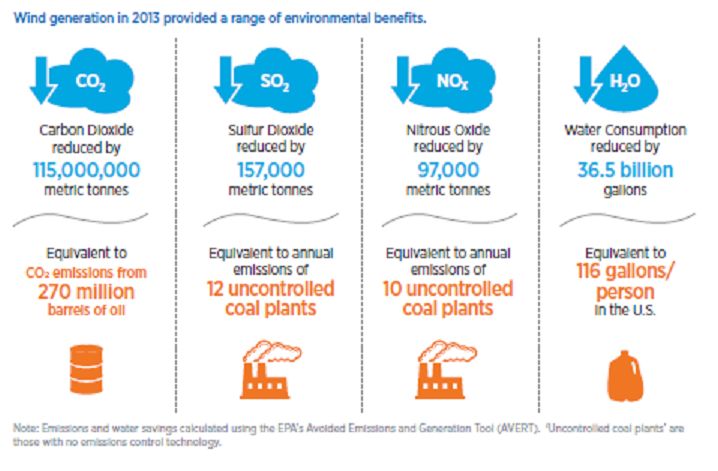
Wind Farm Operations
Wind turbines are usually grouped together in large clusters known as wind farms or wind parks. A typical wind farm can have hundreds of wind turbines spaced far apart to maximize wind capture. The spacing between turbines depends on factors like wind direction, topography, turbine design, and land constraints.
Wind turbines within a farm are connected by cables and infrastructure to collect the generated electricity. The combined output of multiple turbines makes wind farms an efficient way to harness wind power at scale. Power collected from the farm is fed into transmission lines that connect to the grid.
Wind farm operators monitor and control turbines remotely using advanced computer systems. Sensors provide real-time performance data to optimize operations. Technicians routinely inspect the equipment and carry out preventive maintenance to minimize downtime. Repairs and component replacements are done as needed over the turbine’s 25-30 year lifetime.
Well-sited wind farms can generate renewable electricity for decades with minimal environmental impact when properly maintained. Continued technological improvements will likely make future wind farms even more efficient and cost-effective.
Environmental Benefits
Wind energy offers significant environmental advantages over conventional power plants powered by fossil fuels like coal, natural gas, and oil. Burning fossil fuels releases air pollutants like sulfur dioxide, nitrogen oxides, particulate matter, and heavy metals that can cause acid rain, smog, and health issues. Fossil fuel power plants also emit large amounts of carbon dioxide, the primary greenhouse gas driving climate change.
In contrast, wind turbines produce electricity without emitting air pollution or carbon dioxide. Over their lifespan, wind farms can repay their carbon footprint from construction and save hundreds of times more carbon emissions compared to fossil fuel plants. Shifting away from fossil fuels to renewable energy sources like wind and solar is crucial to reducing greenhouse gas emissions and avoiding the worst impacts of climate change.
Wind power has minimal impacts on water quality and consumption. Fossil fuel plants can withdraw large volumes of water for cooling and pollute waterways with waste products. The global transition to clean energy could reduce water use in power generation by over 50%. Compared to conventional sources, wind energy uses very little water once operational.
Well-sited wind farms allow the land around turbines to remain productive for grazing livestock and crops. Offshore wind farms occupy minimal seabed space and co-exist with fishing and marine traffic. Though wind turbines can pose a risk to birds and bats, careful siting and operations can minimize wildlife impacts. Overall, wind energy creates far fewer adverse environmental effects than traditional power plants.
Growth and Future of Wind Power
Wind power has experienced tremendous growth in recent years as more countries and companies invest in renewable energy. According to the Global Wind Energy Council, global installed wind power capacity has increased over 10 times in the last 10 years, from 74 GW in 2006 to over 564 GW in 2016. Wind power represented over 54% of all new power generation capacity added globally in 2016.
Many experts predict continued strong growth for wind power in the coming decades. The International Energy Agency projects wind capacity could reach 2,110 GW by 2030 under current policies. With supportive policies and rapid technology development, wind capacity could potentially reach 5,670 GW by 2050. That’s enough to supply over 40% of global electricity demand by mid-century.
To enable further growth, companies are investing in innovations to improve wind turbine efficiency, increase power generation, and lower costs. Some key areas of research and development include:
– Larger wind turbines and rotor blades to capture more wind energy. The average turbine size has increased from 1.5 MW in 2006 to around 2.5 MW today.
– Advanced materials like carbon fiber to enable lighter, stronger blades up to 90 meters long. This expands power production.
– Floating offshore wind farms that can be located further from shore in stronger, steadier winds.
– Smart wind farm software and machine learning to boost energy production and predict maintenance needs.
– New storage technologies to save excess power when the wind is strong.
With such innovations and the increasing global demand for clean electricity, wind power is poised to play a major role in the world’s energy future.
Conclusion
In summary, wind energy is one of the fastest growing and most promising renewable energy sources worldwide. Wind turbines capture the wind’s kinetic energy and convert it into electricity without emissions. Large, advanced wind turbines are now used in wind farms and offshore to provide clean power to the grid. Wind energy helps combat climate change and reduce dependence on fossil fuels. With many benefits and innovations, wind power is poised to keep expanding as a major part of our clean energy future.
Renewable wind energy is incredibly important for our planet. By tapping into the powerful winds around us, wind power provides substantial amounts of electricity without carbon dioxide emissions or pollution. Wind energy has huge potential to grow and help nations transition away from coal, gas, oil and nuclear. Although intermittency remains a challenge, advances in wind turbines, energy storage, and transmission are helping to overcome technical barriers. With policies and investments that support its continued maturation, wind can become an even larger contributor to global energy supply while significantly slashing greenhouse gas emissions from the power sector. Wind power delivers environmental, economic and energy security benefits – it is clean, inexhaustible and abundant almost everywhere. The winds will keep blowing for billions of years, making wind energy a sustainable power source we can rely on for the long-term.

